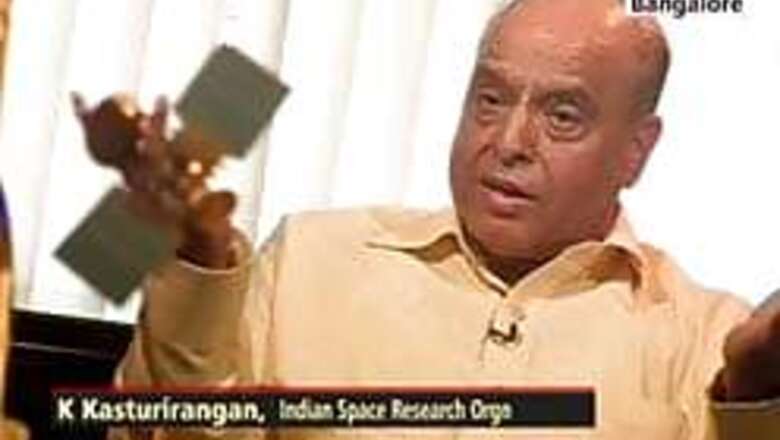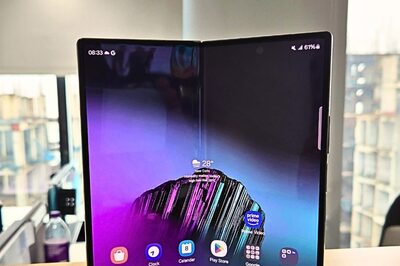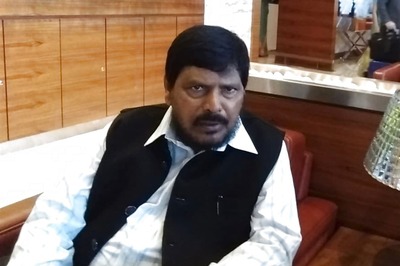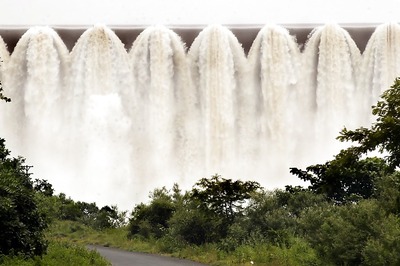
views
India’s space research programme will take a giant leap forward on Wednesday when lunar explorer Chandrayaan 1 blasts off from Sriharikota in Andhra Pradesh. What will India gain from the lunar mission? Is India going to send an astronaut to the moon next? IBNLive readers got a chance to ask this to Dr Krishnaswamy Kasturirangan, former chairperson of Indian Space Research Organisation and the father of the Chandrayaan 1 mission.
Dr Kasturirangan steered India’s space programme for over nine years as chairperson of Indian Space Research Organisation (ISRO). He was also the chairperson of Space Commission and secretary to the Government of India in the Department of Space. Under his leadership, India successfully launched and operationalised the PSLV and GSLV satellites.
He is currently a Rajya Sabha MP. Excerpts from a chat with IBNLive readers on Monday:
Jyoti Singh: What is new in this lunar mission?
Dr Krishnaswamy Kasturirangan: This mission is unique because of several new features of scientific observational capabilities not achieved by any of the previous missions. The topography of the moon as well as mapping of the surface of the moon will be done at a level of precision which will improve the understand the gravitational field of the moon, the detailed chemical composition of the studies will throw light on the aspects of the moons origin and lastly this mission seeks to find unambiguous answers to the presence of water in the form of ice.
Anandpal: Why are we doing something which has been done 30 years ago?
Dr Krishnaswamy Kasturirangan: :There is considerable interest among the space-faring nations to revisit moon. The reasons include availability of better technologies, better sensor systems to conduct scientific studies as well as the possibility of expanded on planetary exploitation in the coming decades as the humankind moves towards expanding its outreach its locations in the solar system. Therefore, this second phase of lunar exploration is much more focussed in terms of science, technology, exploration and finally creating habitats either for exploiting lunar resources or as a take off point to the other parts of the solar system.
KT: Why is India spending crores on the moon mission? Americans have money so let them spend. Satellites and mobile and infrastructure development is ok. Why waste money trying to prove something to someone?
Dr Krishnaswamy Kasturirangan: I can add to this that the fundamental question of origin and evolution of moon is yet to be scientifically satisfactorily answered.
Secondly, it provides ISRO with an upgradation of various technologies and techniques such as control guidance and navigation, trajectory design and deep space communication etc. The Chandrayaan 1 is truly an inspirational mission for the new generation.
Lastly, as the humankind makes major plans to explore the solar system India should have the necessary credentials for being part of this adventure and all this for a cost of less than Rs 300 crore.
Abhishek: What is the risk of Chandrayaan bouncing off Moon's orbit (not being captured into its orbit) into deep space? Conversely, is there a risk, of the spacecraft crashing into the moon?
Dr Krishnaswamy Kasturirangan: It is a very interesting point that you have raised. The trajectory analysis right from take- off of the launch vehicle to injection into a lunar trajectory of the spacecraft and finally inserting into the pre-planned lunar orbit is one of the important challenges of the mission.
I recall that in the early phase of such lunar missions involving Soviet Union and USA there were situations of spacecraft bouncing off moon's orbit or unplanned crash into the moon. But with better modelling capabilities, improved understanding of the gravitational fields of the earth and the moon and in-situ tracking of the spacecraft during its transit to the moon and later around the moon today such eventualities are much less probable.
PAGE_BREAK
The ISRO team has carried out elaborate simulation of the entire spacecraft flight right up to final 100 kilometer x 100 kilometer orbit around moon.
Amitabh: Can we expect close cooperation with the US in our space programs?
Dr Krishnaswamy Kasturirangan: Of course. Close collaboration with US is one of the elements of the India’s space Programme. I may mention that our programme started in 1963 by cooperating with the US through the supply of sounding rockets; then using communication satellite to conduct site experiment, buying four first-generation INSATs from USA besides acquiring components and materials from that country.
The Chandrayaan I contains two instruments for studying the water on moon as well as mapping the minerals. I am sure that in the years to come this cooperation and collaboration stand to expand and strengthen.
Rajeev: How capable and how close is ISRO now to sending an astronaut into space on its own?
Dr Krishnaswamy Kasturirangan: ISRO as of now has declared plans to send astronauts into Space. You will appreciate that this is a major leap from the existing level of activities and therefore calls for major developments of various technologies such as man-rating of launch vehicle, development of space capsules for carrying astronauts, perfecting the re-entry systems, simulation facilities for the astronauts to undergo various types of space environment as well as mission control and training.
While we have certainly confidence to undertake such a mission, the need to decide on a suitable strategy for implementation is critical to decide the timeframe.
Subhendu Goshen: Some scientists feel that you are over-hyping the angle of Helium 3. Helium 3 is found on the Moon: how do you get it back to Earth at a reasonable cost?
The technology to generate electricity from Helium 3 does not exist as we have not been able to implement controlled fusion. Also, the technology to extract helium 3 from lunar soil is not available. How do you answer your critics?
Dr Krishnaswamy Kasturirangan: : Certainly the issues related to Helium 3 exploitation on moon is a far-fetched idea. One can only say at this stage that the constant irradiation of the moon has resulted in accumulation of Helium 3 over more than 4 billion years and as and when the possibility of exploitation of lunar materials becomes feasible this could be an important consideration. I do consider several hurdles to be overcome in the coming decades before such ideas can take the shape of reality.
Innak: Sir, how could this lunar mission be useful to Indian student academic future?
Dr Krishnaswamy Kasturirangan: As I mentioned earlier, this mission has an inspirational objective. A unique opportunity to the student community to work in the emerging field of solar system exploration on one side and challenging possibilities in the area of engineering and technology on the other side. The data from the scientific experiments can be analysed in various university departments leading to the development of strong research groups.
PAGE_BREAK
Raj: How to control the trajectory of space vehicle?
Dr Krishnaswamy Kasturirangan: A trajectory is identified for the spacecraft to enable it to reach moon and enter the domain of its gravitational field by capture. The control of trajectory involves use of control, guidance and navigational capabilities (CGN) of the spacecraft.
CGN is achieved by suitable navigation points like stellar objects as well as gyroscopes. Control is carried out by propulsion, which is activated to give the right orientation and push to the spacecraft when needed. Further the positional information is also evaluated by means of radio-tracking of the spacecraft and using principles like Doppler effect.
Pavan: What rank would you give to Indian space technology in comparison with other countries and will we be able to market our technology in near future?
Dr Krishnaswamy Kasturirangan: Indian technology even though home grown compares very satisfactorily with some of the best technologies in the world. For example, we operate some of the best remote sensing satellites and have the leadership here.
Our communication satellites are comparable to the best in the world. Launch vehicle capabilities imply several technologies whose level of maturity compares favourably with similar systems elsewhere. We have already commercial agreements with Europe to build their communication satellites.
Further we have successfully orbited the satellites belonging to four or five countries. We have also been able to lease the communication transponders to some of the most demanding international customers. All these testify to the level of sophistication and capability of our systems.
Badami: Sir, it is an honour to ask you a question. I really want to know how do you feel on a professional and personal level? India is finally up there in the stars!
Dr Krishnaswamy Kasturirangan: It is always a matter of great pride to see India succeeding in its space missions with high level of reliability. In the case of moon mission it took four years to conceptualise and outline a plan of action. It took another four years to implement the same. Professionally there is great satisfaction that new technologies have been developed and implemented and stand to evaluation in the coming weeks.
There is tremendous excitement and expectation at this juncture. At the personal level for me it is a matter of great satisfaction to see ISRO continuing with its high standards of professionalism and rigour. I would like to congratulate Mr. Madhavan Nair, the current chairperson, and his team for not only continuing the great tradition of ISRO but also in strengthening and building upon it. I wish them the best of success in all endeavours and aspirations.
Payal Rawal: We are proud of you and all the very best for the entire mission from all the Indians.
Dr Krishnaswamy Kasturirangan: Thank you for your good wishes. The entire ISRO team has put its best for more than five years in bringing this mission to this level. With good wishes from all of you we hope to have a successful mission.




















Comments
0 comment